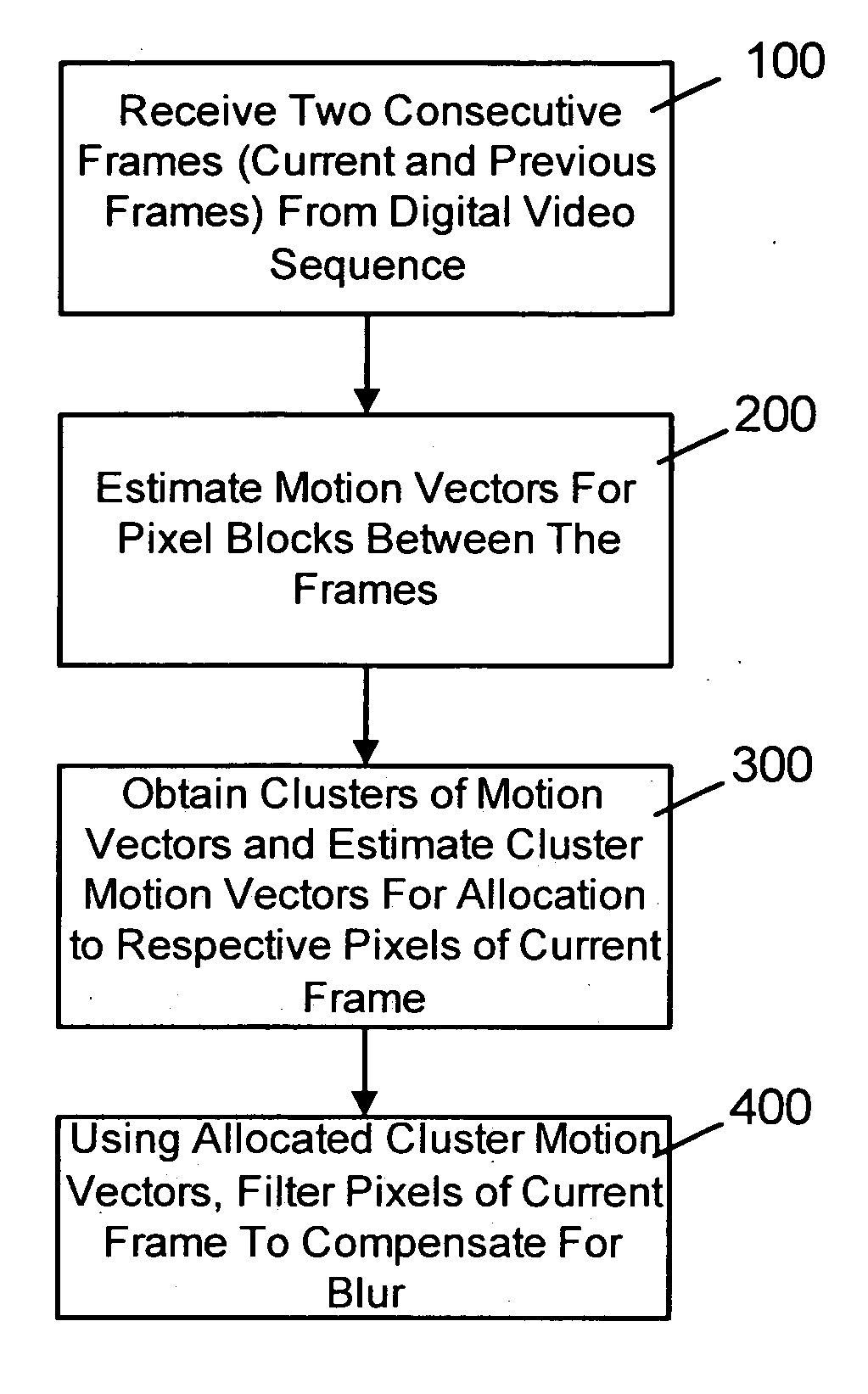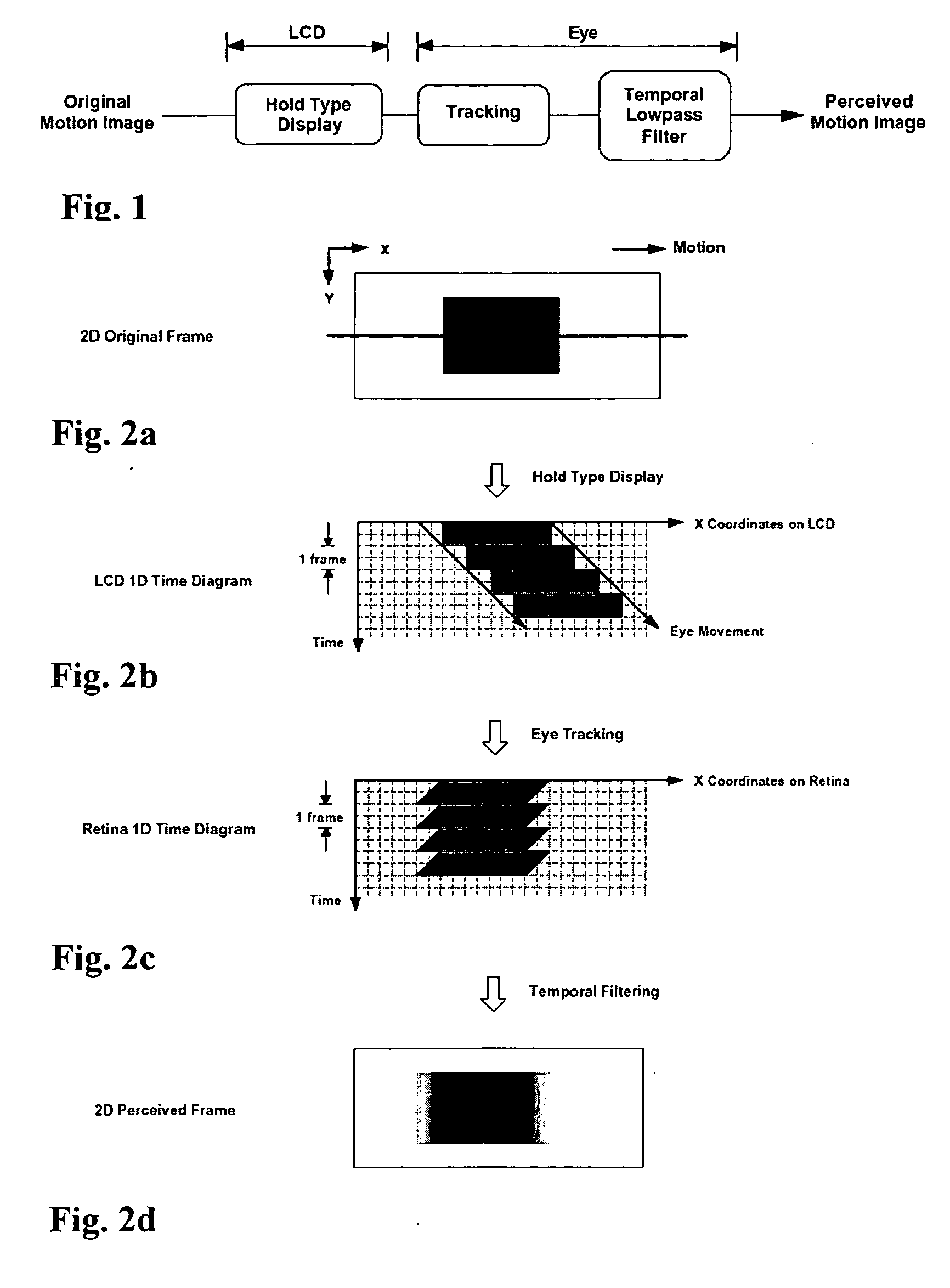Method and system for estimating motion and compensating for perceived motion blur in digital video
a technology of digital video and motion blur, applied in the field of image processing, can solve problems such as noise and the formation of after-images on the human retina, and achieve the effect of increasing the sharpness of digital video
- Summary
- Abstract
- Description
- Claims
- Application Information
AI Technical Summary
Benefits of technology
Problems solved by technology
Method used
Image
Examples
Embodiment Construction
[0089] For ease of understanding, perceived blur in a digital video image caused by a hold-type display such as an LCD device that uses a sample and hold display format will firstly be discussed. Turning to FIG. 1, a schematic diagram showing perceived blur in a digital video image frame resulting from the LCD device and the motion perception mechanisms of the human visual system is shown. The following assumes that the frame rate of the LCD device is sufficiently high to permit perfect temporal integration into the human visual system within one frame interval. It has been shown by D. C. Burr, in the publication entitled “Temporal Summation of Moving Images by the Human Visual System” (Proceedings of the Royal Society of London B, 221(1184), pp. 321-339, 1981) that this condition is satisfied with frame rates of 60 Hz or higher. The following also assumes that the human eye can perfectly track region movement across the LCD device. It has been reported by S. Daly in the publication...
PUM
 Login to View More
Login to View More Abstract
Description
Claims
Application Information
 Login to View More
Login to View More - R&D
- Intellectual Property
- Life Sciences
- Materials
- Tech Scout
- Unparalleled Data Quality
- Higher Quality Content
- 60% Fewer Hallucinations
Browse by: Latest US Patents, China's latest patents, Technical Efficacy Thesaurus, Application Domain, Technology Topic, Popular Technical Reports.
© 2025 PatSnap. All rights reserved.Legal|Privacy policy|Modern Slavery Act Transparency Statement|Sitemap|About US| Contact US: help@patsnap.com



